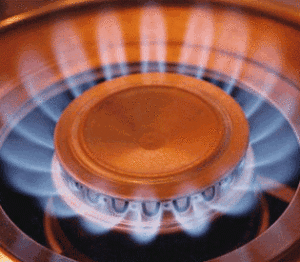 Natural gas capped a second weekly advance as cold weather across the eastern, northern and parts of the central US spurred very high heating demand, paving the way for at least two heavy inventory withdrawals that would push stockpiles back below the five-year average.
Natural gas capped a second weekly advance as cold weather across the eastern, northern and parts of the central US spurred very high heating demand, paving the way for at least two heavy inventory withdrawals that would push stockpiles back below the five-year average.
Natural gas for delivery in April slid 3.37% on Friday to settle the week 8.5% higher at $2.972 per million British thermal units, shifting in a weekly range between Tuesdays one-week low of $2.713 and Fridays one-month high of $3.007.
A bearish supply report by the Energy Information Administration on Thursday failed to reverse weekly momentum as investors looked past an inventory surplus, eyeing cold weather across key consuming US areas over the next couple of weeks.
EIA data showed that US natural gas inventories fell by 111 billion cubic feet in the week ended February 13th, compared to analysts’ projections for a drop in the range of 105-111 bcf and the five-year average decline of 180 bcf. Stockpiles slid by 247 bcf during the comparable period a year earlier.
Total gas held in US storage hubs amounted to 2.157 trillion cubic feet, forming a surplus of 2.8% to the five-year average of 2.099 trillion from last week’s deficit of 0.5%. The surplus over the year-ago inventory level of 1.479 trillion cubic feet expanded to 45.8% from 31.4% a week earlier.
The five-year-average surplus, however, is not expected to last long as the past week’s widespread cold blasts across the northern, eastern and parts of the central US are factored in. Next week’s report is expected to show an inventory decline well above the normal, probably over -200 bcf. The five-year average drop for the week ended February 20th is 131 billion cubic feet, while stockpiles fell by 117 bcf a year earlier.
Moreover, if reinforcing cold blasts follow this weekend and next week, as expected, this would line up another significant inventory decline for the following week as average withdrawals continue to drop steeply, bearing the potential to bring inventories to more than 100 bcf below the average. The five-year average drop for the week ended February 27th is 115 bcf.
Cold weather to persist
NatGasWeather.com reported in a Friday mid-day update that next weeks polar blasts will likely be followed by another week of cooler temperatures into the beginning of March, possibly lining up another larger-than-average inventory withdrawal.
In the near-term, a new strong polar blast will be sweeping across the central and eastern US on Sunday, pushing deep into the Southeast early next week and even touching northern Texas. A reinforcing cold blast will follow through, spurring very strong national heating demand for the rest of February.
Very active weather patterns will take place in the beginning of March but weather data remains unclear of how much cold Canadian air will be tapped. If a sufficient amount is brought to the northern US, this would keep heating demand strong, while five-year average withdrawals continue to shrink as spring draws closer.
The West will remain near-normal throughout next week, while some cold blasts hit the south-central US, but readings will continue to hover near seasonal levels. A notable change in weather patterns may come in early March when cold blasts across the East ease, paving the way for the return of mild weather, while Pacific systems hit the West with cooler conditions.
Temperatures
According to AccuWeather.com, readings in New York on February 23rd will range between 8 and 20 degrees Fahrenheit, compared to the average 30-43, and will shift between 12 and 29 degrees three days later. Highs will firmly establish above the freezing point as of March 1st. Chicago will range between 7 and 13 degrees tomorrow, compared to the average of 24-38, and will see readings bottom at 5 degrees three days later. Highs are not expected to find stable ground above the freezing point before March 6th.
Down South, Houston will range between 38 and 46 degrees tomorrow, compared to the average 50-68 and will remain cooler than usual through February 27th, before rising back to near-seasonal afterwards. On the West Coast, Los Angeles will enjoy mostly seasonal weather through the first five days of March, with readings set to range on February 24th between 49 and 70 degrees, compared to the average 50-69.
Pivot points
According to Binary Tribune’s daily analysis, April natural gas futures’ central pivot point stands at $2.939. In case the contract penetrates the first resistance level at $3.040 per million British thermal units, it will encounter next resistance at $3.107. If breached, upside movement may attempt to advance to $3.208 per mBtu.
If the energy source drops below its first support level at $2.872 per mBtu, it will next see support at $2.771. If the second key support zone is breached, the power-station fuel’s downward movement may extend to $2.704 per mBtu.
In weekly terms, the central pivot point is at $2.897. The three key resistance levels are as follows: R1 – $3.082, R2 – $3.191, R3 – $3.376. The three key support levels are: S1 – $2.788, S2 – $2.603, S3 – $2.494.





